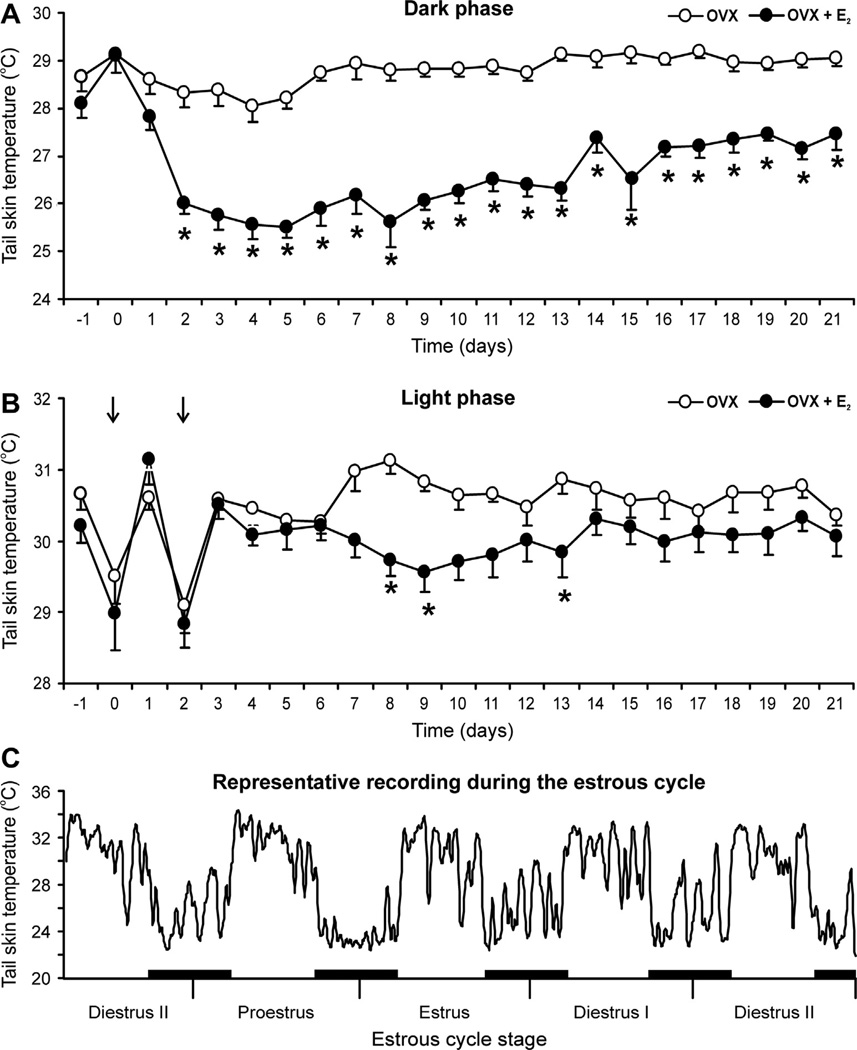Fig. 7.
Effects of subcutaneous capsules of 17β-estradiol (E2) on average (±SEM) tail skin temperature of ovariectomized rats during the dark (A) or light (B) phase (n = 8–10 rats/group). In the dark phase (A), E2 treatment of ovariectomized (OVX) rats markedly reduces tail skin temperature from experimental day 2 through the end of the experiment. The reduction in tail skin temperature by E2 in the light phase (B) is delayed and smaller in magnitude than that seen in the dark phase. The acute drop in tail skin temperature during the light phase of days 0 and 2 (arrows) reflects sympathetic vasoconstriction at the time of capsule implantation. (C) Recording of tail skin temperature of an individual intact rat during the estrous cycle (moving average of 5 data points). This recording illustrates circadian rhythms, large fluctuations during most of the cycle and decreased tail skin temperature with lower fluctuations on proestrous night. The black bars represent the dark phase. * Significantly different in OVX + E2 rats compared to OVX. Reproduced with permission from Williams et al. (2010).

